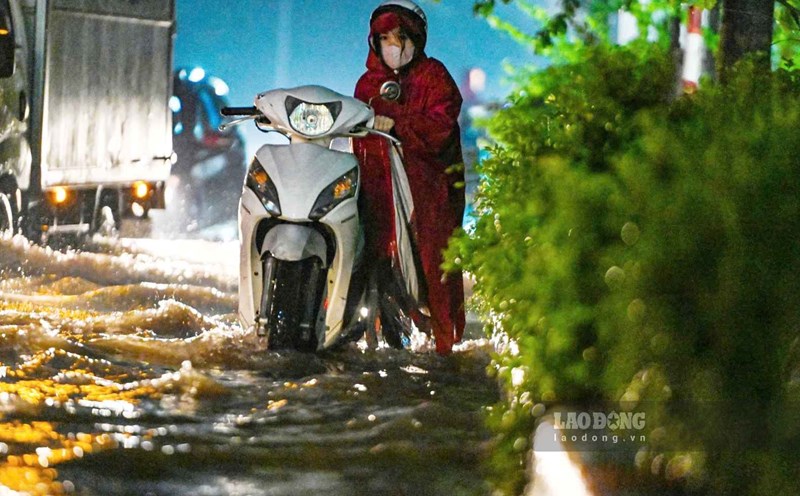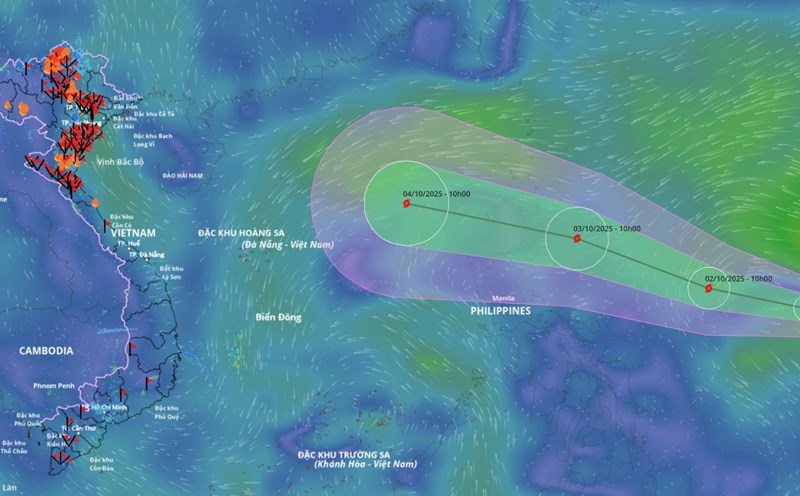According to the National Center for Hydro-Meteorological Forecasting, at 10:00 a.m. on October 1, the center of the tropical depression was at about 14.5 degrees north latitude; 131.4 degrees east longitude, in the sea east of Luzon Island (Philippines). The strongest wind near the center of the tropical depression is level 6-7 (39-61 km/h), gusting to level 9. Moving west-northwest at a speed of about 15 km/h.
It is forecasted that in the next 24 hours, the tropical depression will move west-northwest at a speed of about 15 km/h and is likely to strengthen into a storm.
At 10:00 on October 2, the center of the storm was at about 15.1 degrees north latitude; 128.3 degrees east longitude, in the sea east of Luzon Island (Philippines). Strong intensity level 8, gust level 10.
It is forecasted that in the next 48 hours, the storm will continue to move west-northwest, at a speed of about 20-25 km/h and is likely to strengthen.
At 10:00 on October 3, the center of the storm was at about 16.8 degrees north latitude; 123.6 degrees east longitude, in the sea east of Luzon Island (Philippines). Strong intensity level 9, gust level 11.
The danger zone is identified as an area located from latitude 14.5 degrees north to longitude 21 degrees north, east of longitude 119. The natural disaster risk level is level 3 for the eastern sea area of the northern East Sea.
In the next 48 to 72 hours, the storm will move mainly in the west-northwest direction, traveling 25-30 km per hour, entering the East Sea and continuing to strengthen.
Regarding the impact of the tropical depression that was followed by the storm, from October 3, the sea area east of the northern East Sea will have winds gradually increasing to level 6 - 7; the area near the storm center will have strong winds of level 8, gusts of level 10, waves 2.5 - 4.5 m high. The sea will be rough.
From October 4 to October 6, the northern East Sea area (including Hoang Sa archipelago) is likely to be affected by strong winds of level 10 - 11, gusting to level 14.
Ship operating in the above-mentioned dangerous areas are likely to be affected by thunderstorms, whirlwinds, strong winds, and large waves.











